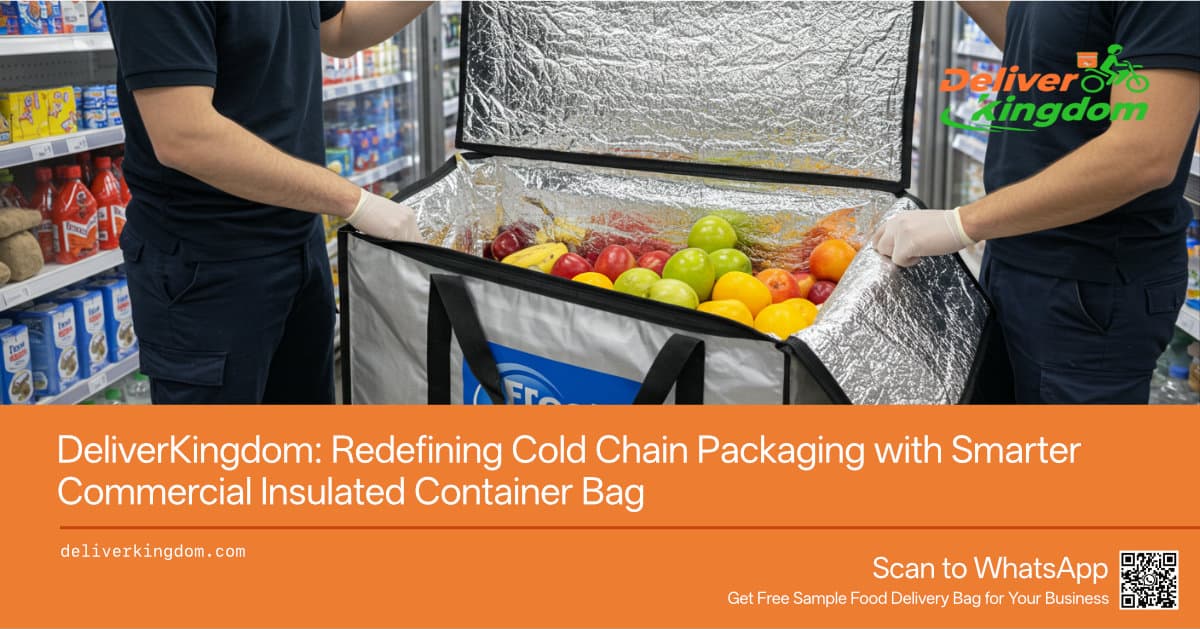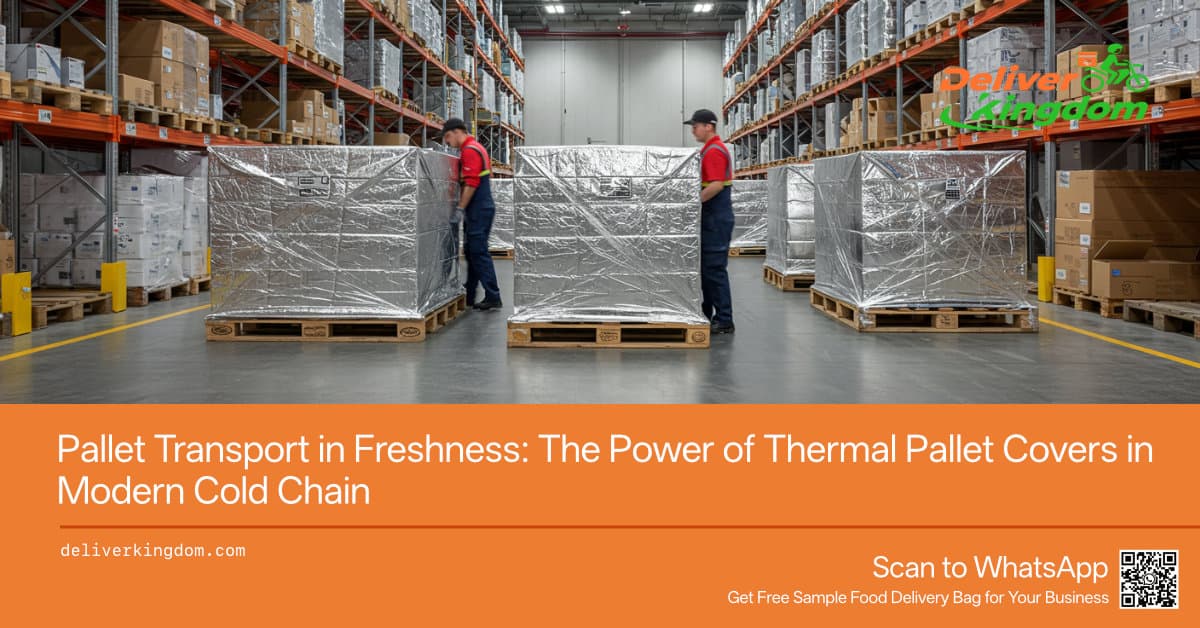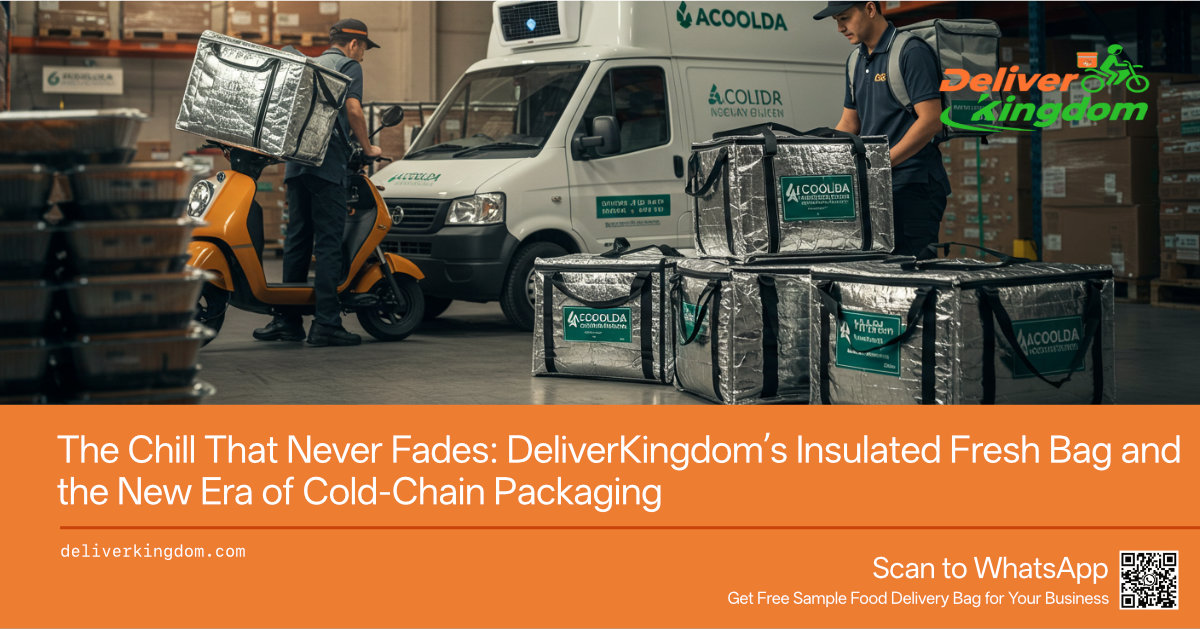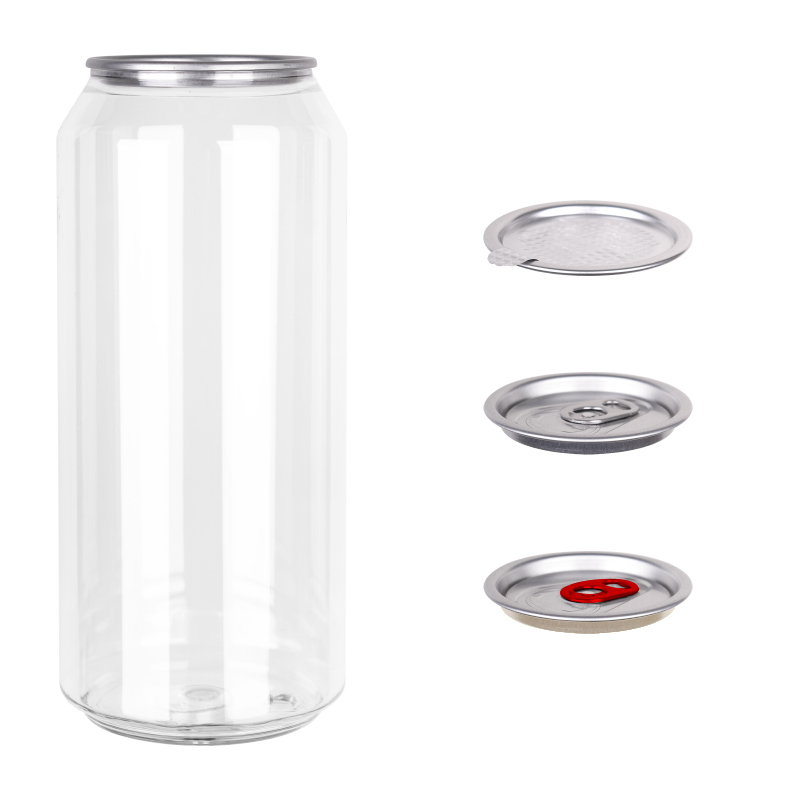
Table of Contents
-
Why Cold Chain Packaging Matters More Than Ever
-
DeliverKingdom: From Guangzhou to Global Partnerships
-
Insulated Fresh Bag: Simple but Powerful Everyday Solution
-
Deep Cold Box Bag: The Answer for Long-Distance Deliveries
-
Vacuum Insulated Bag: Precision Protection for Sensitive Cargo
-
Tackling Real-World Cold Logistics Pain Points
-
Customization That Speaks Your Brand Identity
-
Proven Quality with International Certifications
-
Large-Scale Production and Fast Delivery Capabilities
-
Serving Restaurants, Logistics Companies, and Global Distributors
1. Why Cold Chain Packaging Matters More Than Ever
In today’s food and logistics industry, keeping products fresh and safe has become more than just a promise; it is the very foundation of customer trust. When a meal arrives lukewarm or seafood shows signs of thawing, the damage goes beyond one order—it hurts the brand itself. The reality is that many bags and boxes on the market fail to protect against heat leakage, moisture, and odors during transit. And with the rise of long-distance deliveries and global food supply chains, these weak points can mean financial loss. Reliable cold chain packaging like an insulated fresh bag is no longer optional; it is the backbone of smooth operations and satisfied customers.
2. DeliverKingdom: From Guangzhou to Global Partnerships
Founded in 2013, DeliverKingdom grew from Guangzhou into a trusted manufacturer serving clients across continents. Our 12,000-square-meter factory in Yangchun City, supported by more than 400 employees, is dedicated to producing cold chain packaging solutions at scale. We hold BSCI and ISO9001 certifications, but what really defines us is over a decade of experience working closely with B2B partners who need large-volume customization. From chain restaurants to food distributors and cold logistics operators, we’ve learned that speed, reliability, and flexibility are what really matter. Our commitment is not only to produce bags and covers but also to provide confidence in every delivery.
3. Insulated Fresh Bag: Simple but Powerful Everyday Solution
The insulated fresh bag is often underestimated until you actually use it. It looks like a regular bag, but its multi-layer design traps temperatures for hours, keeping hot food piping and cold beverages chilled. Light in weight, foldable when not in use, and easy to handle with zippers or Velcro, it was built for fast-moving environments like restaurant deliveries or catering services. Unlike disposable packaging, it resists dust, odors, and water, ensuring food arrives in clean, safe condition. Businesses who have switched to our insulated fresh bag quickly notice fewer complaints, better efficiency, and even cost savings because they can reuse the same bag for countless deliveries.
4. Deep Cold Box Bag: The Answer for Long-Distance Deliveries
When deliveries stretch across long routes or extended hours, standard bags often fall short. The deep cold box bag was created exactly for these high-pressure scenarios. It combines reinforced insulation layers with a sturdy structure that keeps frozen items stable and secure. Seafood, ice cream, or pharmaceuticals traveling in summer heat remain safely stored, even after hours on the road. Our clients, from food distributors to medical supply chains, have seen real-world evidence of this bag holding up in tough climates. It’s not theory—it’s feedback from businesses who rely on it to reduce spoilage and maintain product value during demanding transportation.
5. Vacuum Insulated Bag: Precision Protection for Sensitive Cargo
Some deliveries simply cannot afford a degree of error. That’s where our vacuum insulated bag stands apart. The vacuum layer acts as a shield against external conditions, drastically minimizing temperature fluctuations. It is especially valued in transporting seafood, dairy, or even medical products where consistency is non-negotiable. Customers appreciate that even after hours, the product inside feels almost untouched by the outside world. For logistics companies that stake their reputation on punctuality and quality, the vacuum insulated bag has become a trusted ally. It’s proof that small details in design can make the biggest difference in customer satisfaction.
6. Tackling Real-World Cold Logistics Pain Points
Over the years, we’ve listened closely to the frustrations of drivers, couriers, and logistics managers. They complained about bags that tear too easily, containers that grow heavy after repeated use, moisture ruining packaging, or persistent odors after only a few deliveries. These are real pain points that waste time and money. That’s why our insulated fresh bags, deep cold box bags, and vacuum insulated bags are built with strong fabrics, odor-resistant lining, and foldable yet durable designs. They are not experimental solutions but answers shaped directly from the voices of industry professionals who live with these problems every day.
7. Customization That Speaks Your Brand Identity
A bag that carries food is also carrying your brand’s reputation. DeliverKingdom provides customization that goes far beyond size. From fabrics to colors, from full logo printing to specialized closures, we adapt to the specific identity of each partner. For example, a restaurant chain may need bright, logo-heavy insulated fresh bags that match their marketing, while a distributor might require large, plain deep cold box bags optimized for function over looks. With OEM and ODM services, we tailor not just products but experiences, helping clients turn everyday delivery tools into recognizable brand statements.
8. Proven Quality with International Certifications
Trust in packaging often comes down to certification and consistent results. With BSCI and ISO9001 recognition, DeliverKingdom shows a commitment to international quality standards. But we also believe evidence comes from long-term relationships with clients who continue to reorder because the bags stand the test of real-world use. From stitching to zippers, from insulation material to waterproof layers, every element is tested to endure repeated handling. When companies invest in our insulated fresh bags or vacuum insulated bags, they know it is not just an order—it is a reliable asset that pays back through performance.
9. Large-Scale Production and Fast Delivery Capabilities
In the fast-moving world of cold chain logistics, timing can be everything. Our Yangchun factory, with more than 400 staff, operates with the scale to produce thousands of units daily without cutting corners. This strength allows us to respond to sudden spikes in demand, seasonal peaks, or expansion projects for restaurant chains and distributors. OEM and ODM experience lets us switch fabrics, adjust sizes, or reprint logos quickly, without interrupting mass production. For partners needing both customization and speed, we provide a rare balance that many suppliers cannot achieve—big volume with fast delivery.
10. Serving Restaurants, Logistics Companies, and Global Distributors
Our customer base is as diverse as the cold chain industry itself. Restaurants depend on insulated fresh bags for daily food delivery. Cold logistics companies rely on deep cold box bags for frozen shipments. Distributors use vacuum insulated bags when product sensitivity demands it. What unites them all is the expectation that every bag delivers safety, freshness, and reliability. At DeliverKingdom, we see ourselves not just as a manufacturer but as a long-term partner. Every bag that leaves our factory is part of a larger story—helping businesses around the world deliver meals, groceries, and goods that arrive exactly as intended.





















